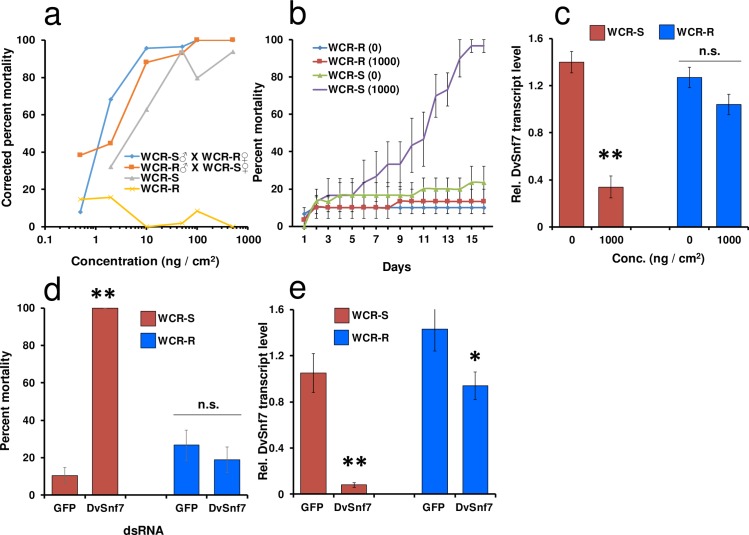Fig 2. WCR-R larvae and beetles are resistant to DvSnf7 dsRNA and inheritance of DvSnf7 dsRNA resistance is recessive.
(a) Concentration–response curves of WCR-S, WCR-R neonates and F1 neonates from WCR-R and WCR-S reciprocal crosses. Each cross was bulk-mated and consisted of 80 males and 80 females. Each population was assayed using 5–6 concentrations (n = 105–254). (b) Percent beetle mortality from WCR-R and WCR-S when exposed to artificial diet overlaid with DvSnf7 dsRNA (1000 ng /cm2) or water (0 ng /cm2). Assay was conducted one time with three replications, each consisting of 10 beetles (n for all treatments = 30). (c) DvSnf7 transcript levels determined using RT-qPCR in beetles fed for 72 hrs on artificial diet overlaid with DvSnf7 dsRNA or water (n = 7–8). (d) Percent beetle mortality from WCR-R and WCR-S when injected with 25 ng of either DvSnf7 or GFP dsRNA. Mortality was recorded 10 d after injection. Assay was conducted two times each with three replications (n = 30–48). (e) DvSnf7 transcript levels determined using RT-qPCR in beetles injected with 25 ng of DvSnf7 or GFP dsRNA. After injections beetles were allowed to feed on untreated artificial diet for 72 h and collected for transcript analysis (n = 3–8). (c to e) Means ± SEM. **p < 0.0001, *p = 0.042.

